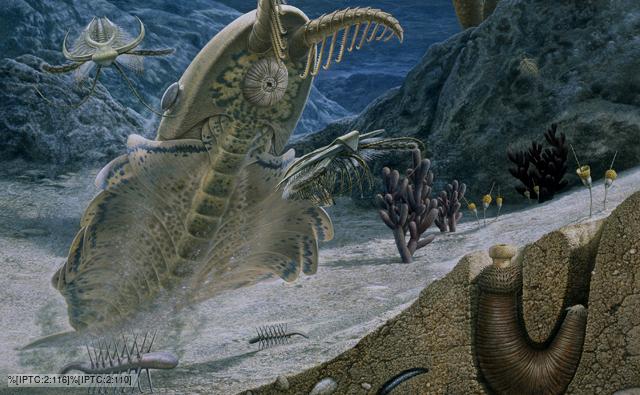 |
| Palaeontology deals with how organisms in the fossil record once lived, as well as the reconstruction of ancient ecosystems like the one portrayed above. |
In recent years new fossils and increasingly powerful methods of analysis have given us information regarding how prehistoric organisms lived: from feeding, breeding to death. We know how species interacted with each other and how others became separated through years of evolutionary history.
The reconstruction of past ecosystems is a vital part of this. They provide a framework on which interpretations can be hung. It is difficult to make a strong case that a new species of fossil hominid was arboreal unless we can argue that it lived in an ecosystem containing an abundance of trees. Indeed reconstructing ancient vegetation is immensely important as plants form the basis of all terrestrial ecosystems. Now an international team of researchers led by the University of Washington has found a way to determine precisely the degree of tree cover and density of vegetation in past ecosystems.
'It's the context in which all land-based organisms live, but we didn't have a way to measure it until now,' said lead author Regan Dunn, a paleontologist at the UW's Burke Museum of Natural History and Culture. The study focused on fossils collected from across Patagonia which represent a 38 million year slice of planetary history from 49 to 11 million years ago.
 |
| Epidermal cells from an onion |
Previous studies looking at vegetation composition have shown this, but Dunn's work has given a way of quantifying the accompanying vegetation density. Plants growing in different exposures to sunlight will display differences in the size and shape of their epidermis - the outermost layer of cells covering their leaves. The epidermal cells of plants grown in shade will be larger and more curved than those from plants grown in lighter conditions.
In the wild, a plant's exposure to sunlight provides a proxy for the surrounding degree of vegetative cover. A higher vegetation density will result in a shadier environment. As a result the researchers were able to use the morphology of the epidermis of the fossil plants to quantify the degree of vegetation cover in that ecosystem.'The significance of this work cannot be overstated,' said co-author Caroline Strömberg. 'Vegetation structure links all aspects of modern ecosystems, from soil moisture to primary productivity to global climate. Using this method, we can finally quantify in detail how Earth's plant and animal communities have responded to climate change over millions of years, which is vital for forecasting how ecosystems will change under predicted future climate scenarios.'
 |
| A 49 million year old phytolith from the Las Flores Formation in Patagonia. Its morphology indicates that it grew in shady conditions |
Dunn and her colleagues took samples of soil from modern ecosystems which included covered rainforests, grassy savannah and woody shrub lands. The density of the tree canopy was recorded and the morphology of the phytoliths from each region correlated mathematically to the degree of tree cover or lack thereof.
When Dunn and co-authors applied the same method to fossil phytoliths from Patagonia, they found something surprising: that habitats lost dense tree cover and opened up much earlier than previously thought. This is significant because the decline in vegetation cover occurred during the same period as cooling ocean temperatures, after the Eocene Thermal Maximum, and the evolution of animals with the type of teeth capable of enduring open, dusty habitats. Duun's study will prove invaluable in reconstructing other past ecosystems, showing that the morphology and habits of the organisms correlate exactly to the specification and density of plants.